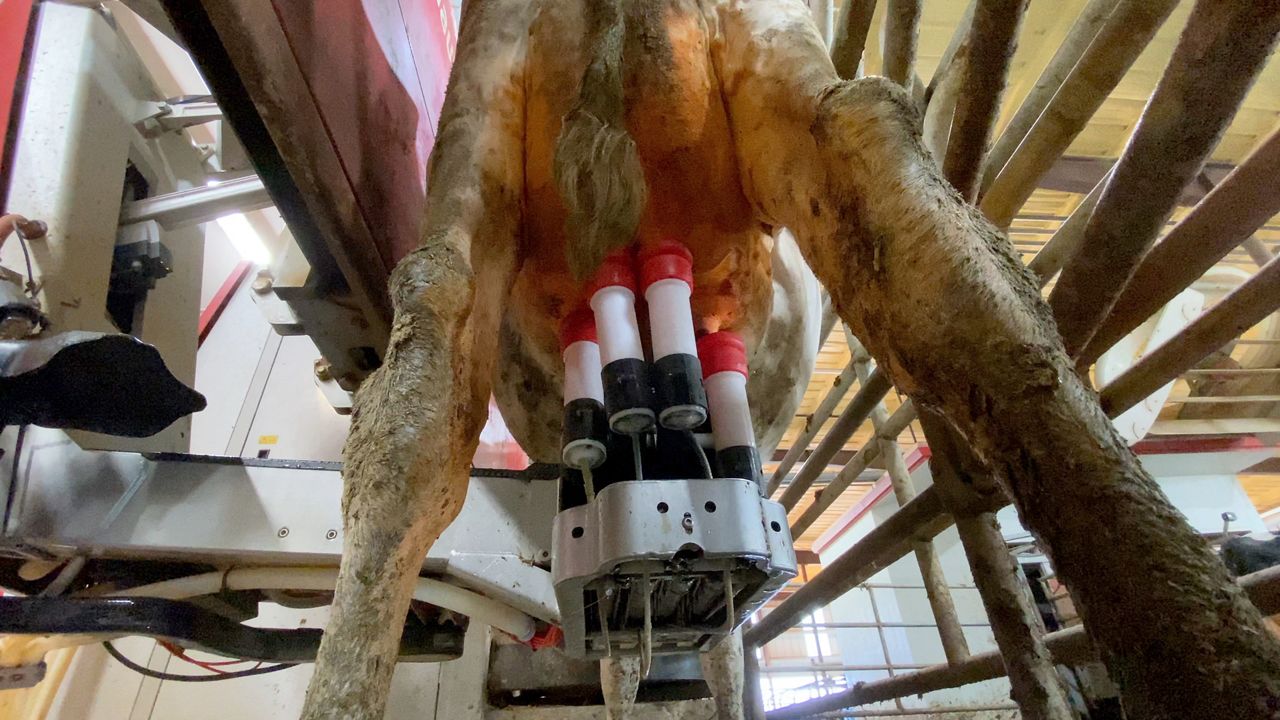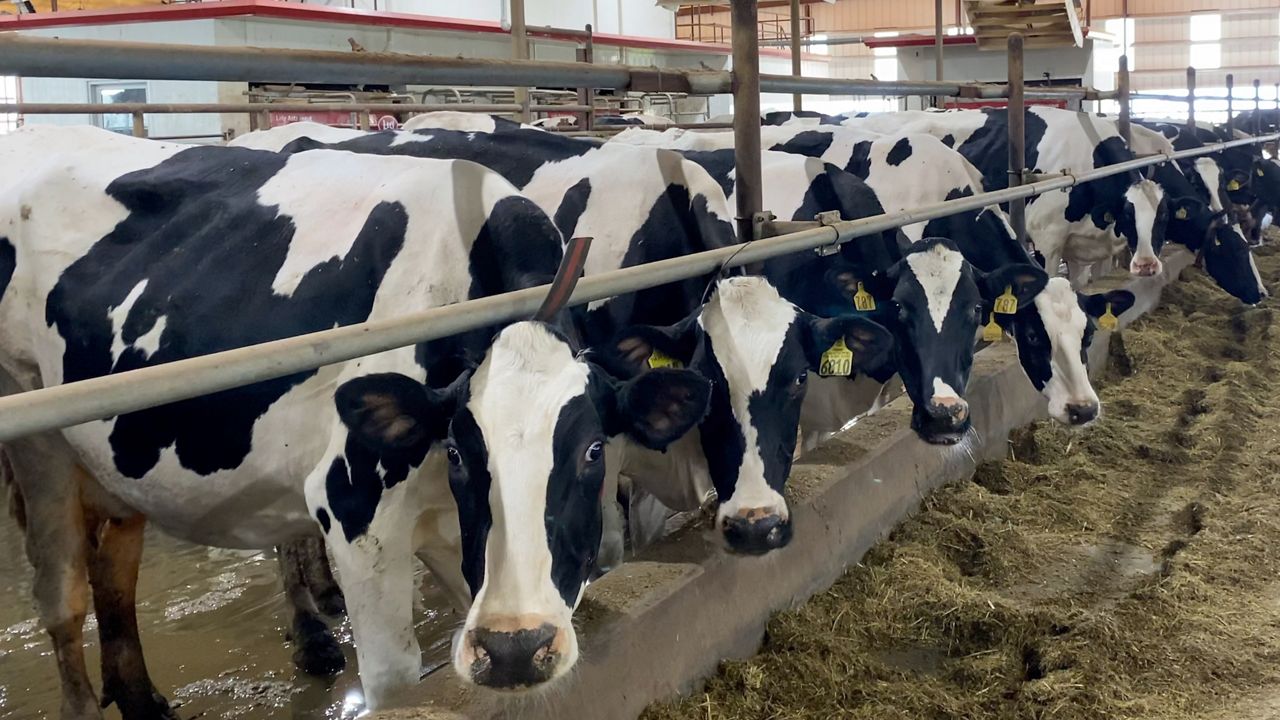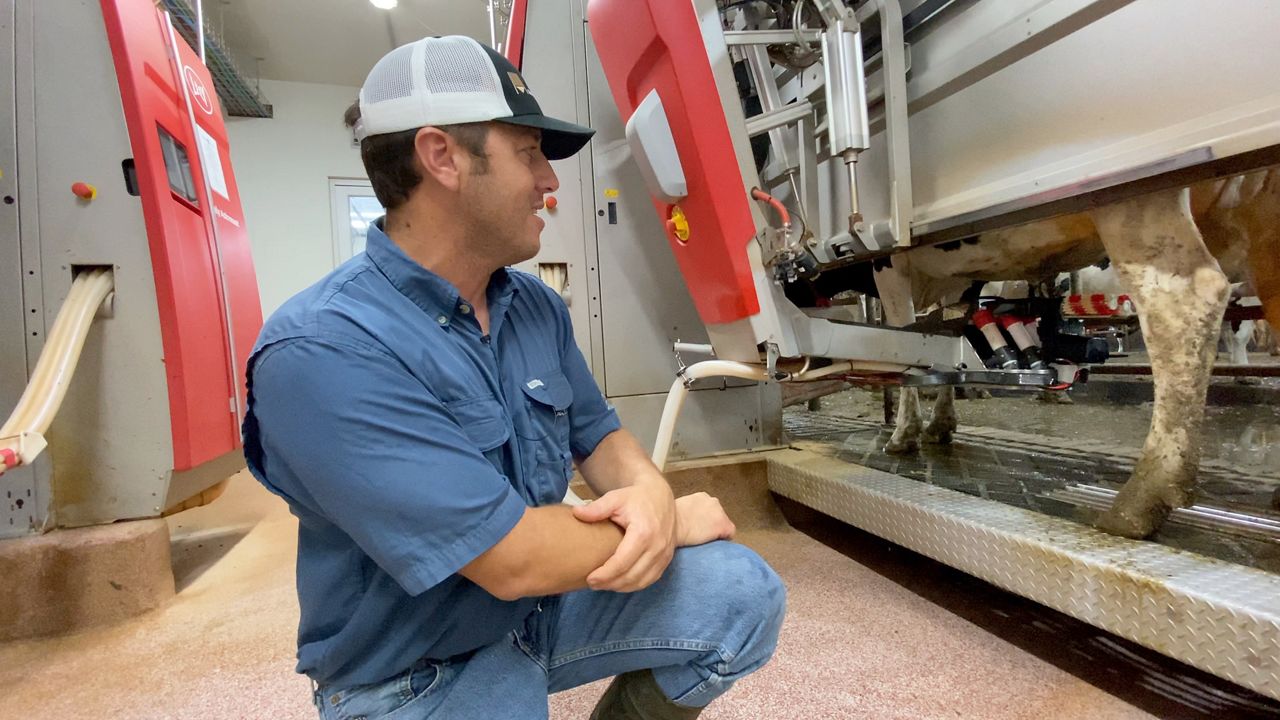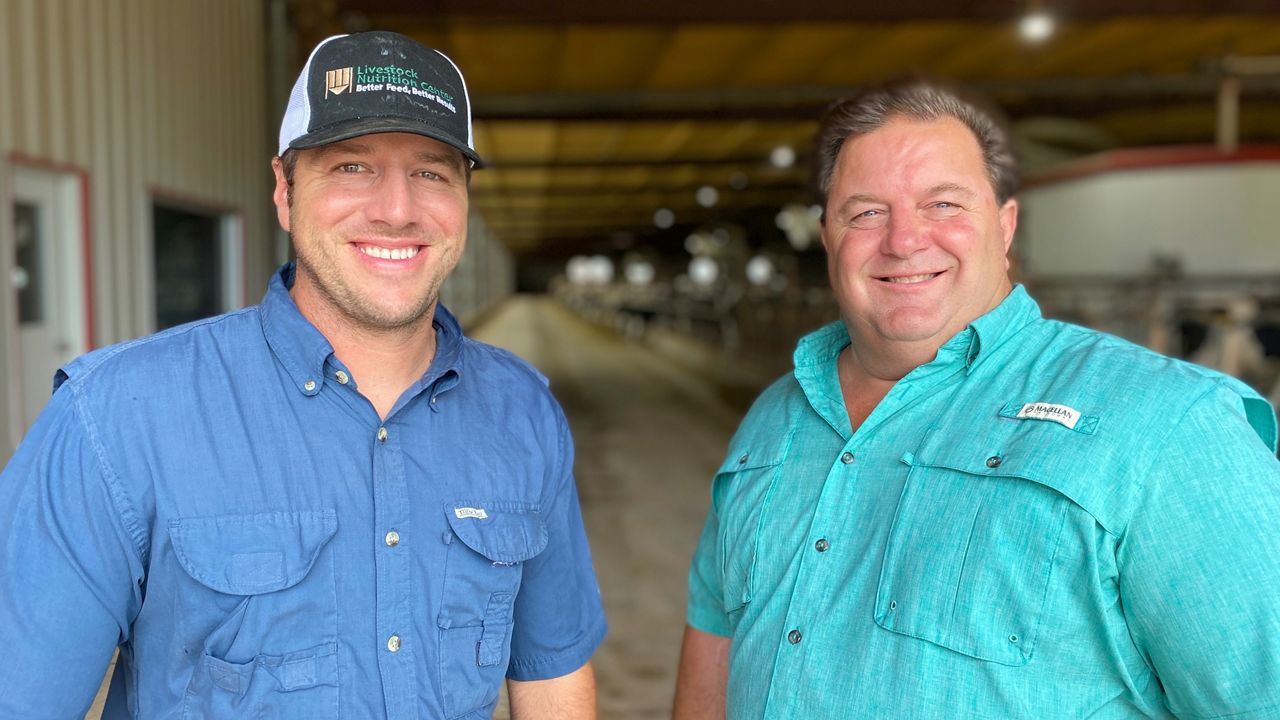SCOTLAND, Texas — When most dairy lovers are enjoying a scoop of ice cream, the melted cheese on a burger, or the cream they add to their coffee they usually aren’t thinking about where that dairy came from, and how it got from farm to table.
Fourth-generation dairy farmer Adam Wolf is not one of those people. He knows how much work went into making the delicious products so many enjoy.
Wolf grew-up working on his parents Frank and Joyce Wolf’s Scot-Tex Dairy in Scotland, Texas. He said he’s always had a passion for agriculture, but hadn’t planned on following in his father's footsteps making a living as a dairy farmer. That changed after he graduated with a Bachelor’s degree in science from Texas A&M University. He realized he wanted to follow the family tradition but had dreams of doing it differently.
Wolf, however, is doing things much different from the way his dad did thanks to advances in milking technology. At 30 years old Wolf is now the proud owner of one of the state's first robotic dairies.
“Currently we have twelve robots in this barn that milk around sixty cows three times a day,” said Wolf.
Wolf broke ground for Wolf’s Legendairy in the fall of 2019. The robotic barn, as he calls it, is an impressive facility where more than 700 cows are held. He started getting the herd acclimated to being milked by a robot instead of a human in October of 2020.

Wolf’s new robotic dairy facility is one of three in Texas currently using this kind of technology. Wolf said incorporating this state-of-the-art technology has been rewarding for the comfort he believes it brings his cows.
“The robot IDs each individual cow,” said Wolf. “We now have this robotic arm that uses lasers to find where the teats are.”
The robotic arms meet the cow once it’s stepped into a milking station, then cleans the cow's teats twice before it is milked.
“They’re scrubbed real good,” said Wolf.

After the cow’s are connected the fresh milk goes into a refrigerated tank, and is shipped out, ultimately becoming Daisy brand sour cream. Those who love the dollops of sour cream at Chipotle restaurants here in Texas can thank Adam’s cows, because it most likely comes from Legendairy.
“Another neat thing is just the demeanor of the cows,” said Wolf. “My cows in this barn, they’re not scared of humans. They don’t turn around and run away, they kind of want to see ‘hey, what’s going on, come pet me, let me lick you.’”
He says that’s a result of providing his cows with designed comfort. The system is fully automated and the cows get to choose when they want to be milked.
“Some cows choose to be milked twice a day and other cows are milked about five times a day. It's just their personal preference.” said Wolf.

Wolf’s friend and Executive Director of the Texas Association of Dairymen, Darren Turley said this kind of operation is the future of the dairy industry.
“Our dairy industry continues to shrink in numbers,” said Turley “We’re down to 333 dairies, we continue to increase our output, but there is very few like this that require no milk-hands, and no one there 24 hours a day, seven days a week to milk the cows like in our normal facilitates.”
According to Wolf, in 2016, there were 450 dairies operating in Texas. Wolf said half of them have been lost over the decade.
"In the late 90s there were 2,800," said Wolf.
He believes turning to technology is the only way to keep thriving in this industry.
A recent report made by the International Dairy Foods Association, shows Texas exports $486 million worth of dairy products each year.
“We rank fifth nationally as the largest dairy state,” said Turley “We’re on track this year to surpass New York to be the number fourth largest dairy state.”

Wolf’s excited for the future, and believes he’s paving the way to more humane milking with a facility that focuses on cow comfort.
“Witnessing the cows being healthy, loving this facility, it really brings happiness to me,” said Wolf.
Owning this dairy farm is a dream come true for Wolf and he plans to keep growing and adapting with hopes of passing on his passion for this work to his kids.
If you have an interesting story or an issue you’d like to see covered, let us know about it. Share your ideas with DFW human interest reporter Lupe Zapata at Lupe.Zapata@Charter.com.



